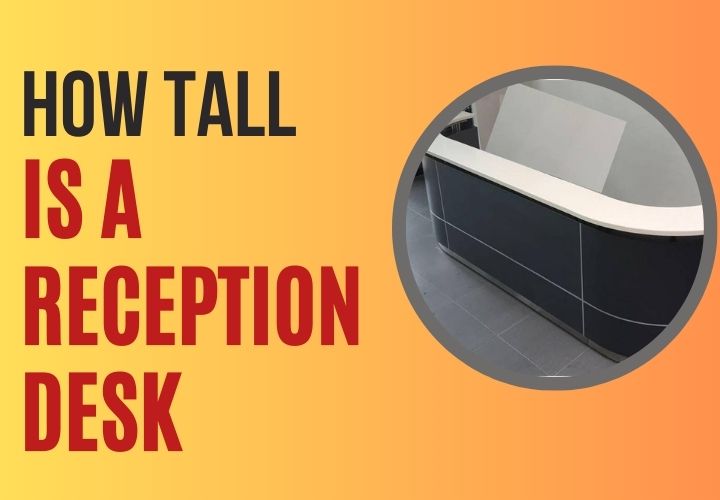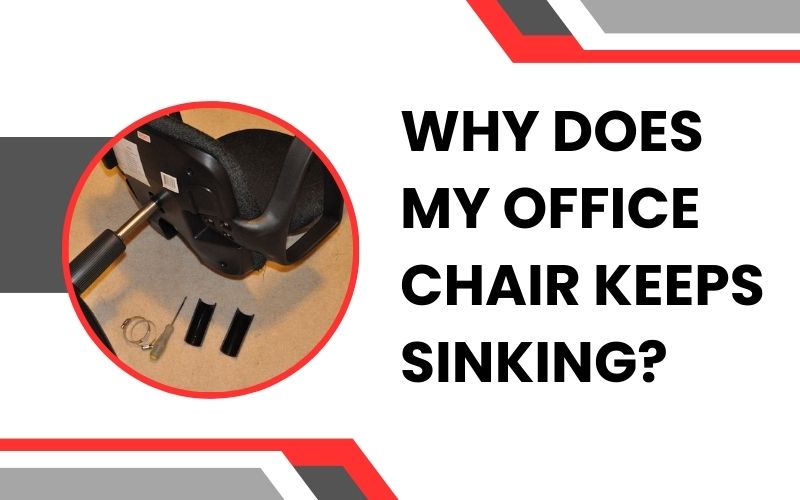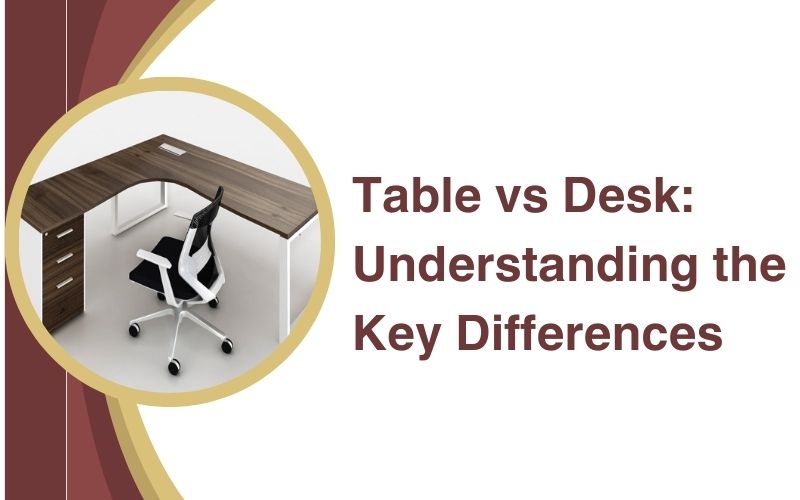When you walk into an office, the reception desk is often the first thing you see. It’s the hub where first impressions are made, and its design, including its height, plays a crucial role in setting the tone for your visitors. But how tall should a reception desk be? Let’s dive into the details.
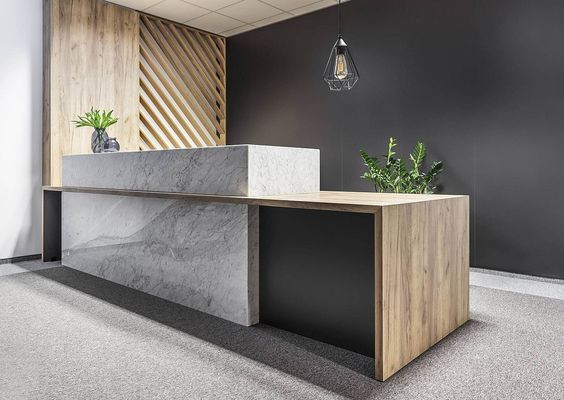
Understanding Reception Desk Height
What is the Standard Reception Desk Height?
The standard reception desk height typically ranges between 42 to 44 inches (107 to 112 cm). This height is designed to create a comfortable standing workspace for receptionists while also ensuring that visitors can interact with them easily.
Why Height Matters
The height of a reception desk is more than just a measurement; it’s a critical element that affects both functionality and aesthetics. A desk that’s too tall or too short can create discomfort and hinder effective communication.
Detailed Reception Desk Measurements
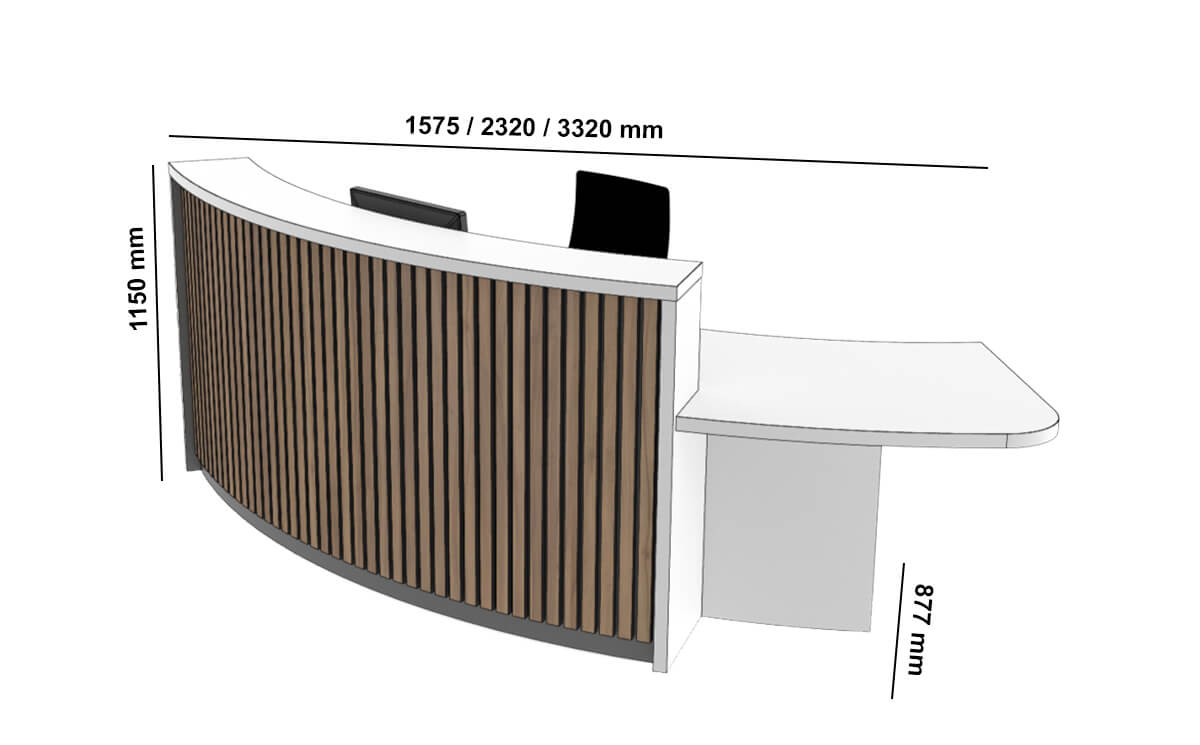
Reception Desk Dimensions
When considering a reception desk, dimensions include more than just height. The overall size, including width and depth, is equally important. Standard dimensions might vary depending on the design of office furniture and purpose of the desk.
Standard vs. Custom Sizes
While standard sizes are readily available and often more affordable, custom sizes can be tailored to fit specific spaces and needs. Custom desks allow for unique designs and functionality that standard desks may not provide.
Reception Desk Depth
What is the Standard Reception Desk Depth?
The standard depth of a reception desk is typically between 24 to 30 inches (61 to 76 cm). This depth provides enough workspace for the receptionist to manage documents, computers, and other necessary items while maintaining an organized area.
Importance of Depth for Functionality
Adequate depth ensures that the receptionist has enough space to work efficiently without feeling cramped. It also affects the storage capacity and overall utility of the desk.
Reception Desk Size
Common Sizes in Various Settings
Reception desks come in various sizes to fit different environments, from small clinics to large corporate offices. Common sizes include widths ranging from 48 to 72 inches (122 to 183 cm), depending on the space available and the number of receptionists using the desk.
Adjusting Size for Space Constraints
In smaller areas, a compact desk can save space while still offering essential functionality. Modular designs can also be an excellent option for adjusting the size according to the room layout.
Reception Counter Height
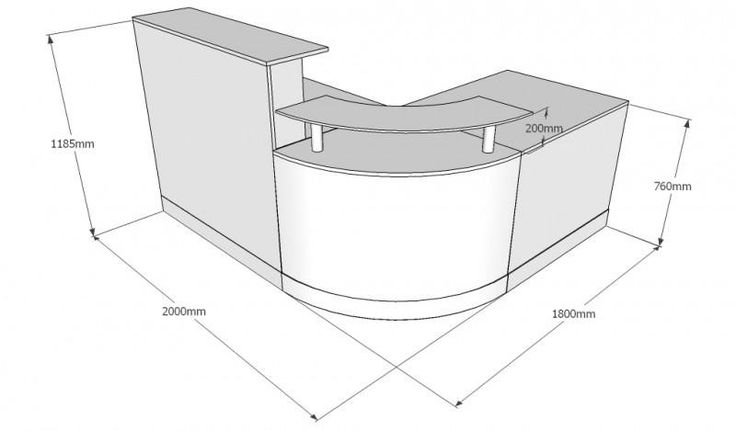
Standard Reception Counter Height
The counter height, where visitors interact with the receptionist, is generally around 36 inches (91 cm). This height is comfortable for most people, whether standing or seated.
Ergonomic Considerations
An ergonomically designed reception desk helps prevent strain and injury. Adjustable elements, such as chairs and monitor stands, can complement the desk to create a healthier workspace.
Design and Aesthetics
Impact of Desk Height on Design
The height of the desk can influence the overall design of the reception area. A well-proportioned desk that fits the space aesthetically can create a welcoming environment.
Balancing Form and Function
While aesthetics are important, functionality should not be compromised. The best reception desks balance stylish design with practical features.
Material Considerations
Popular Materials and Their Influence on Design
Reception desks are made from various materials, including wood, metal, glass, and laminate. Each material has its aesthetic and functional benefits. For instance, wood offers a classic look, while glass can provide a modern, sleek appearance.
Durability and Maintenance
The material choice also affects the desk’s durability and maintenance needs. High-quality materials might have a higher upfront cost but can save money in the long run due to their longevity and ease of maintenance.
Reception Desk Ergonomics
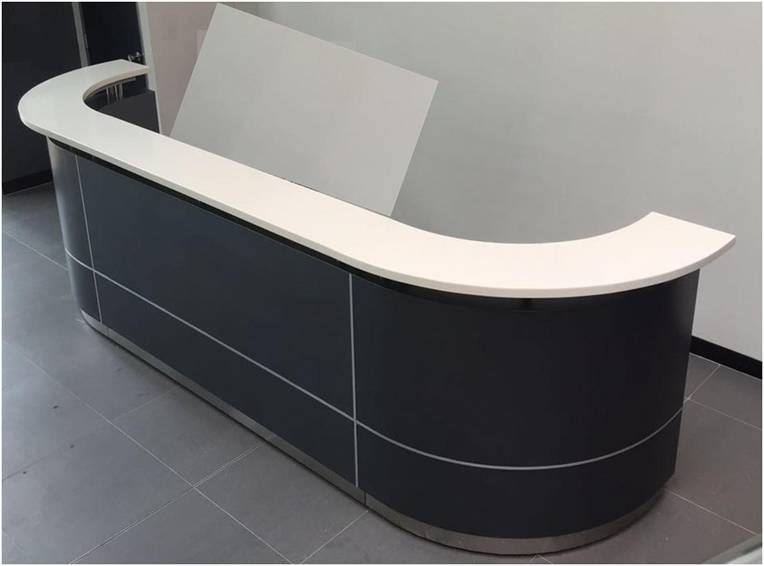
Creating an Ergonomic Workspace
An ergonomic workspace includes more than just the desk; it involves the entire setup, including seating and equipment placement. Ergonomic designs help reduce strain and improve productivity.
Adjustable Desks and Chairs
Adjustable standing desks and chairs allow receptionists to modify their workspace to suit their needs, promoting comfort and efficiency.
Customized Reception Desks
Benefits of Customization
Customization offers several benefits, such as tailoring the desk to fit specific space requirements, incorporating unique design elements, and adding personalized functionality.
Factors to Consider When Customizing
When customizing a reception desk, consider factors like the space available, the number of users, storage needs, and design preferences.
Cost Considerations
Cost of Standard vs. Custom Desks
Standard desks are usually more affordable and quicker to install, while custom desks offer unique features at a higher cost. Balancing your budget with your needs is crucial.
Budgeting for a Reception Desk
When budgeting, consider not only the cost of the desk but also additional expenses like installation, customization, and potential maintenance.
Installation and Setup
Preparing the Space
Proper preparation of the space ensures a smooth installation. Measure the area accurately and plan the layout to avoid any surprises during setup.
Professional Installation vs. DIY
While DIY installation can save money, professional installation ensures that the desk is set up correctly and securely, which is often worth the extra expense.
Maintenance and Care
Routine Maintenance Tips
Regular cleaning and maintenance can extend the life of your reception desk. Use appropriate cleaning products and check for any signs of wear and tear.
Handling Repairs and Replacements
Address repairs promptly to avoid further damage. For significant issues, consult a professional to ensure the desk remains in good condition.
Trends in Reception Desk Design
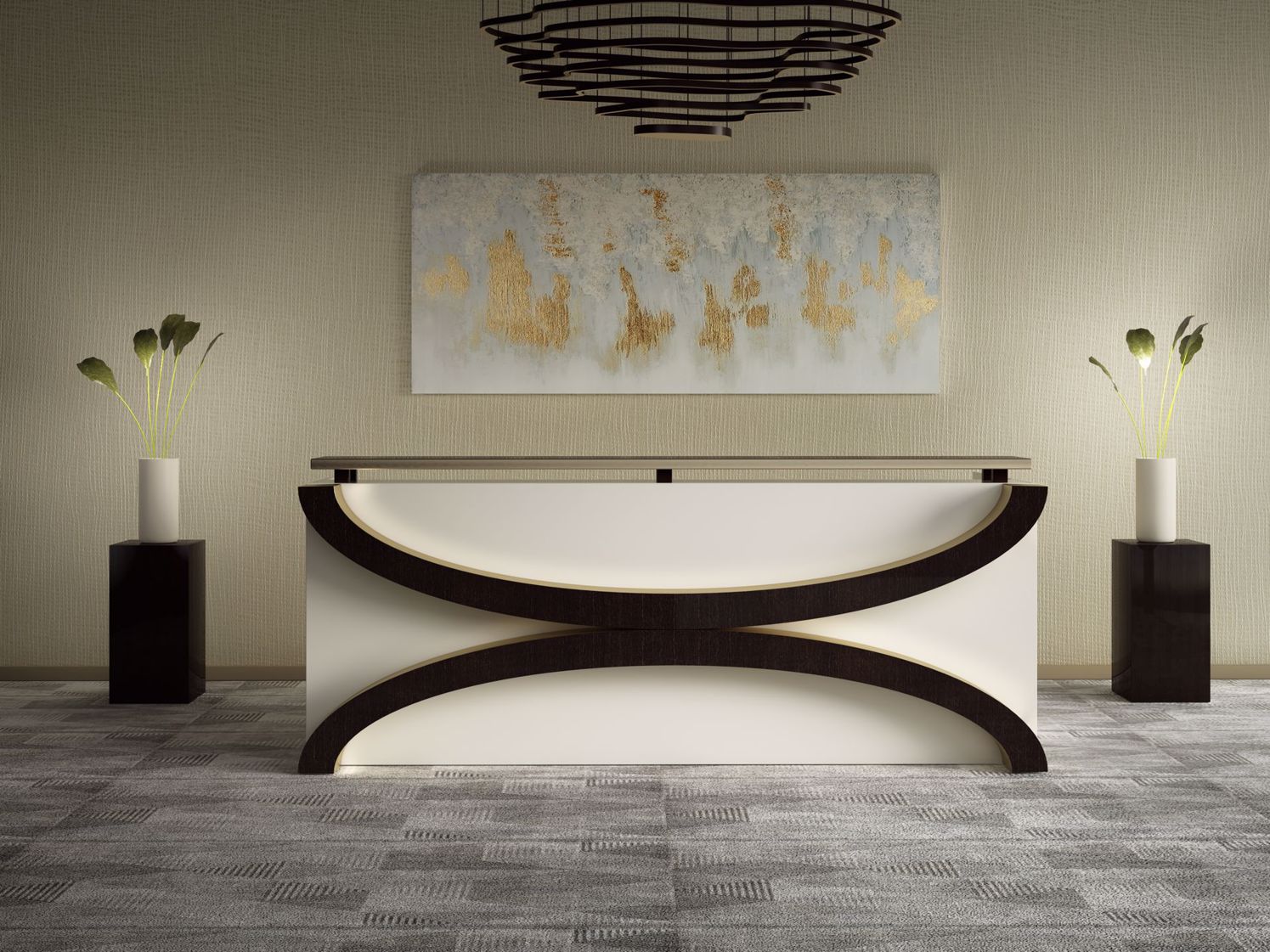
Current Trends
Current trends in reception desk design include minimalist styles, eco-friendly materials, and integrated technology. These trends reflect a move towards more functional and sustainable designs.
Future Predictions
Future trends might see more emphasis on customization, smart technology integration, and innovative materials that offer both durability and aesthetic appeal.
Conclusion
Choosing the right reception desk involves considering various factors such as height, depth, size, material, and cost. A well-designed reception desk not only enhances the appearance of the reception area but also improves functionality and comfort for both receptionists and visitors. By understanding these key elements, you can make an informed decision that meets your specific needs and preferences.
Frequently Asked Questions (FAQs)
Q.1 What is the ideal height for a reception desk?
The ideal height for a reception desk is typically between 42 to 44 inches (107 to 112 cm), which provides a comfortable standing workspace for receptionists and facilitates easy interaction with visitors.
Q.2 How do I choose the right size reception desk for my space?
Choose the right size by measuring your available space and considering the number of users and their needs. It’s essential to balance functionality with the room layout to ensure a practical and aesthetically pleasing setup.
Q.3 Can I Customize my reception desk?
Yes, you can customize your reception desk to fit your specific space requirements and design preferences. Customization allows you to incorporate unique elements and functionalities that standard desks may not offer.
Q.4 What materials are best for a durable reception desk?
Materials such as wood, metal, glass, and laminate are popular choices. Each material offers different benefits in terms of durability and maintenance. High-quality materials, though more expensive, typically provide better longevity and ease of care.
Q.5 How much should I budget for a reception desk?
Budgeting for a reception desk depends on whether you choose a standard or custom design. Standard desks are generally more affordable, while custom desks can offer unique features at a higher cost. Include installation and potential maintenance costs in your budget.
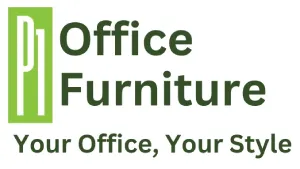
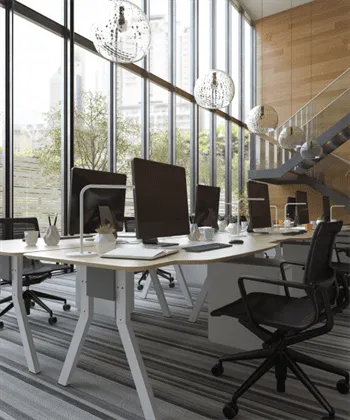 Workstations
Workstations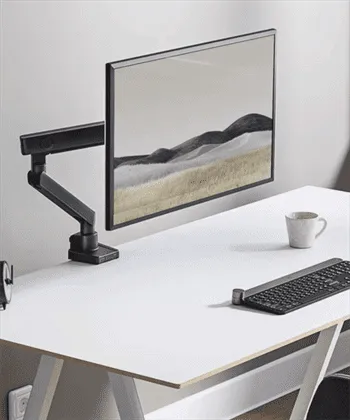 Monitor Arms
Monitor Arms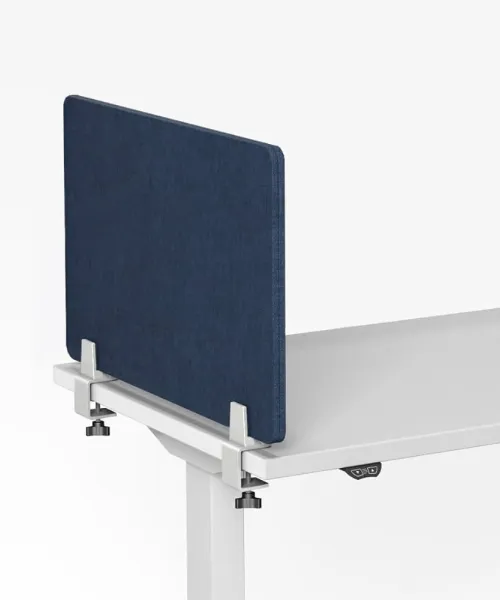 Dividers
Dividers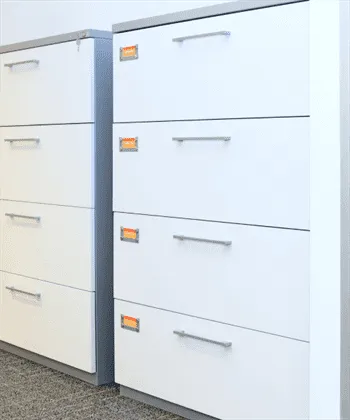 Storage
Storage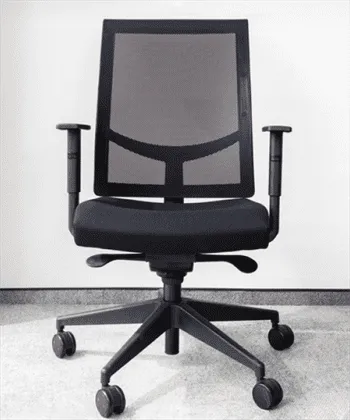 Seatings
Seatings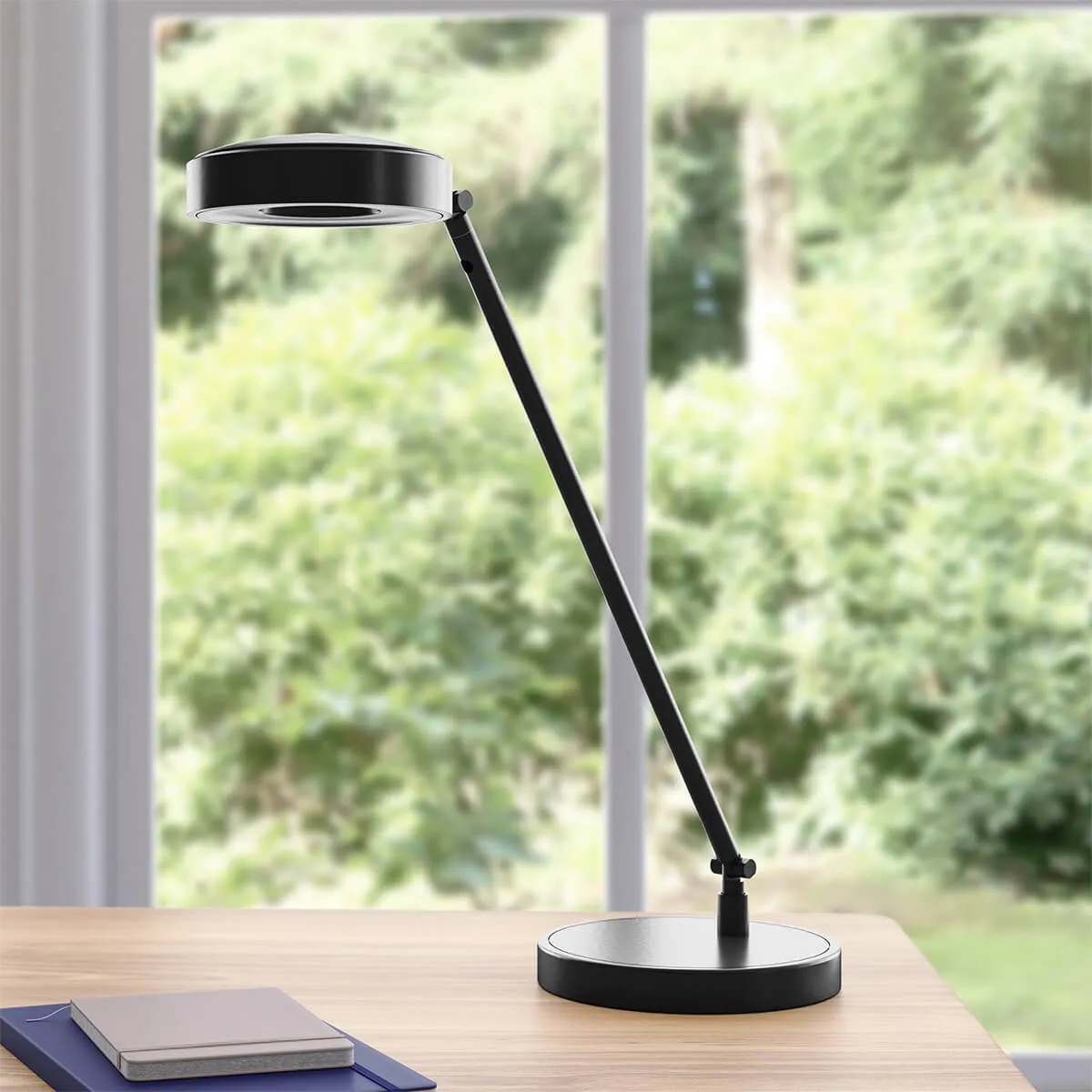 Accessories
Accessories